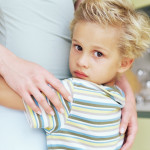An asthma attack can be a very traumatizing experience for the parent as well as a child.
Seeing your child doubled over and struggling to breathe can elicit an intense feeling of panic and helplessness, something that can very well paralyze any attempt at assistance.
While exhausting and stressing, it is vitally important to the well-being of your child that you know exactly how to spot an asthma attack in progress, and know exactly how to respond to it.
The Basics – Recognizing an Asthma Attack
It should be fairly easy to spot when your child is suffering from an asthma attack.
Certainly, your child will very likely make it known themselves if they are able. Look for any signs of struggled breathing, such as wheezing, throaty coughs, and shortness of breath.
While most asthma attacks are comparatively mild, there’s also the danger of it developing into something more serious and potentially life-threatening. Signs of a particularly bad asthma attack include:
- The inhaler not being effective
- Increased intensity in coughing/wheezing
- Extreme shortness of breath – or the inability to speak or breathe.
In any event of an asthma attack, getting access to medicine and treatment is imperative.
Make sure whoever is suffering from it has immediate access to their inhaler. In truly bad cases, have them taken at once to a hospital or a pediatric urgent care center.
Be prepared to submit all medical information as well.
Preventing Asthma Attacks
Prevention is always better than cure. Not everyone shares the same triggers for asthma.
There are, however, some particularly common ones that you may want to look out for in order to prevent them from triggering an attack. For young children, in particular, these are:
- Certain allergens such as dust motes, pollen, and animal dander
- Second-hand smoke
- Changes in air humidity
- Colds and flu
- Extreme and sudden excitement or shock
- Too much exercise and activity
Naturally, you can’t expect to protect your child from all things, all the time — at least not without severely hampering their growth and enjoyment.
The best thing to do is to just stay mindful of your child’s surroundings, and take whatever steps are necessary to keep any potential triggers away from your child.
Keep a very clean home, for example, and dust your surfaces frequently. Also, make sure that any smokers in the household smoke outside and far away from your child. Ashtrays and loose cigarettes should also be kept away from them as well.
Don’t ignore any warning signs either. If your child seems to be using their inhaler more frequently or seems to have more difficulty breathing than usual, then consider it an indication that something is triggering their asthma and try to find the source.
What to Do in an Asthma Attack
First and foremost, remain calm. Your child is panicking enough as it is — they don’t need to see you panicking as well and adding to their distress. If your child becomes frightened, they may breathe more erratically and make their attack even worse.
Instead, quickly move to calm your child as much as you can while assisting them.
Make sure you read the instructions on any medication you use carefully. Keep your child still and try to avoid moving them around too much.
Make sure they take two puffs on their inhaler every two minutes until they either recover or ten minutes have passed. All the while, make sure that the child is being calmed down and soothed.
If the inhaler doesn’t work after ten minutes, call 911 for an ambulance immediately. If the ambulance doesn’t arrive within three minutes, keep repeating the steps with the inhaler until it does. Even if the child recovers, consider a visit to the family doctor for a check-up.
You should do this within the first 48 hours of the attack.









